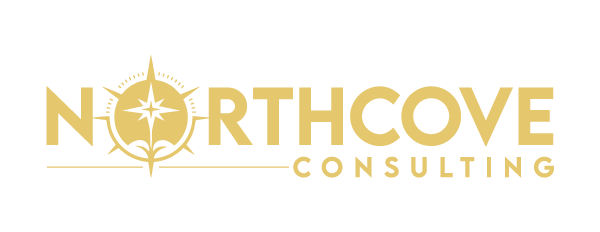
How to Build Effective Total Rewards Communication Strategies That Employees Understand
Employees want to feel valued in every workplace. The reason is not just about getting a paycheck. Sometimes, these employees want to know what they are earning, how they are being compensated, and what benefits they can expect. This is where total rewards steps in. These rewards are more than just salary. These total rewards communication strategies encompass health benefits, retirement plans, bonuses, time off, recognition, and additional benefits. But offering these rewards is only half the battle. The real challenge is effectively communicating employee benefits and rewards.
If employees don’t understand what they’re being offered, they can’t fully appreciate it. That’s why communication is key. In this blog, we’ll break down how to build effective total rewards communication strategies that employees actually understand and care about.
What Is Total Rewards Communication?
Effective total rewards communication is the process by which a company shares information about compensation and other rewards with its employees. This may sound simple, but it is often overlooked or done in a way that confuses people.
Some well-crafted total rewards communication strategies help employees understand the full value of their benefits. It makes complex information easy to understand. It also builds trust and boosts engagement. This is where working with a total rewards consulting company can make a difference.
Why Communication Matters More Than You Think
When people don’t understand their benefits, they may go through the worst. They might think that their company isn’t being fair, or that others are getting more favorable treatment. This can lead to confusion and, in some cases, turnover.
On the other hand, when employees clearly understand what’s being offered, they feel more valued. They’re more likely to stay with the company, be productive, and speak positively about their workplace.
- Common Challenges in Communicating Rewards
Challenge | Description |
Too Much Jargon | Many reward documents are full of industry terms that people don’t understand. |
Information Overload | Sending long emails or documents all at once can overwhelm employees. |
One-Size-Fits-All | Not everyone prefers the same kind of communication. Some like emails, others prefer videos, or in-person chats. |
Lack of Trust | If communication has been unclear in the past, employees may not believe what they are being told. |
Here Is How You Can Process Total Rewards Communication Strategies
Step 1: Know Your Audience
Before crafting messages, take the time to understand who your employees are and what motivates them. What are their preferences? What kind of language do they understand? What are their concerns?
- Generational Differences: Younger employees might prefer digital content, while older employees may prefer printed materials.
- Cultural Backgrounds: Be mindful of language and cultural differences.
- Job Roles: Office workers might have different needs and employee rewards communication best practices than field workers or remote teams.
Surveys and focus groups can be helpful tools for gathering this kind of information.
Step 2: Simplify the Language
Benefits and compensation often involve complicated terms. However, your goal is to ensure that everyone understands. Use plain language, avoid legal or technical terms, and break down complex ideas with examples. This will make HR professionals and managers feel confident in their communication skills.
- Use plain language
- Avoid legal or technical terms
- Break down complex ideas with examples
Instead of saying, “Defined contribution retirement plan,” try, “A savings plan where we match a percentage of your contributions.”
Step 3: Choose the Right Channels
People consume information in different ways. Your message should meet them where they are.
- Email: Good for quick updates or summaries
- Intranet: A place to keep detailed information
- Meetings: Useful for more personal or sensitive topics
- Videos: Great for storytelling or walking through processes
- One-on-Ones: Personal and tailored
Utilize a combination of these channels for optimal results.
Step 4: Time It Right
When you communicate is just as important as how you communicate. A strong talent management framework supports this by encouraging open communication and highlighting real-life success stories.
- Don’t send important updates late on a Friday.
- Tie communication to key events like open enrollment or bonus announcements.
- Give employees time to process and ask questions.
A total rewards strategy communication plan calendar can help keep things on track.
Step 5: Be Consistent
Communication should be regular and reliable. If employees only hear from HR during open enrollment, they might tune out the HR communication strategy for total rewards for the rest of the year.
- Share updates regularly, even if nothing major has changed
- Reinforce messages through different formats
- Keep branding and tone consistent
Consistency builds trust over time.
Step 6: Make It Personal
Employees care more when they feel the message is meant for them.
- Use personalized statements (e.g., “Here’s what you earned in bonuses this year”)
- Allow employees to explore their benefit options
- Tailor content to different departments or roles
Step 7: Measure and Improve
How do you know if your communication is working? Ask.
- Use surveys to gather feedback
- Track engagement (click rates, attendance, etc.)
- Watch for behavior changes (like more people using their benefits)
Use this data to adjust and improve your total rewards communication strategies over time.
Step 8: Educate Managers
Managers are often the first point of contact for employees. If they don’t understand Total Rewards, they won’t be able to explain it to their teams. This underlines the importance of managers in the total rewards communication process, making them feel empowered and integral to the process. One way to support this is by incorporating them into broader employee engagement strategies that focus on clear communication and providing managers with the necessary tools to guide their teams effectively.
- Offer training sessions
- Provide simple talking points
- Encourage open conversations
When managers are informed, they become powerful messengers.
Step 9: Use Real Stories
People relate to stories more than numbers. Share real examples of how benefits have helped employees.
- A story about a new parent using parental leave
- An employee who saved money through a health plan
- Someone who used the company match to grow retirement savings
These stories make the rewards feel real.
Step 10: Keep Evolving
Your workforce will change. So should your communication. Revisit your total rewards communication strategies every year, stay updated on new tools and channels, and listen to employee needs. This emphasis on adaptation will enable HR professionals and managers to feel more proactive and responsive in their communication strategies.
- Revisit your total rewards communication strategies every year
- Stay updated on new tools and channels
- Listen to employee needs
Adaptation is part of success.
Examples of Great Compensation Messaging
Whenever it comes to sharing information about pay and benefits, always remember that clarity huge difference in helping employees. Also, it can help them understand and value what they receive. One way is the use of personalized total rewards statements. These statements provide each employee with a clear and easy-to-read breakdown of their salary and benefits.. For companies seeking to enhance their presentation of this information, compensation consulting services can be a valuable resource.
For greater day-to-day transparency, digital dashboards are also gaining popularity. These dashboards provide employees with real-time access to their detailed compensation package. These total compensation communication examples not only improve understanding but also build trust and engagement. When done well, they help employees feel confident in their earnings, and they feel more connected to the company.
Final Thoughts
Building effective total rewards communication strategies takes time and effort. But trust me, it’s worth it. Because when employees understand what they’re getting, they feel seen and appreciated. Through this, they’re more likely to stick around and become ambassadors for your workplace. At Northcove Consulting, we’ve seen how simple, thoughtful communication can make all the difference in building that connection.
Remember, it’s not about being flashy. It’s about being clear, consistent, and human. Keep it simple. Speak from the core of your heart. And always put the employee first. If you’re ready to build a strategy that truly connects, please reach out to us at [email protected] or call us at (877) 595-3087.
Frequently Asked Questions
Why is this total rewards communication important?
Clear communication makes sure that employees understand and appreciate their full compensation package. This will lead to higher engagement and improved retention.
What are the best ways to communicate total rewards?
Utilize multiple channels, including emails, videos, in-person meetings, and mobile apps. You can keep the messages simple and repeated throughout the year.
How can I make total rewards communication more effective?
Avoid using HR jargon! These segment messages for different employee groups and train managers can clearly explain rewards in one-on-one discussions.
How do I know if my communication strategy is working?
You can track employee feedback and retention metrics. You can adjust your approach if employees remain confused or underutilize benefits.
How to Communicate Total Rewards Effectively?
Don’t forget to use clear, simple language and avoid jargon. Share information through multiple channels, such as emails, videos, and one-on-one meetings.
Related Posts
The Top 7 Benefits of Effective Workforce Planning Every HR Leader Should Know
The Top 7 Benefits of Effective Workforce Planning Every HR Leader Should Know Most conversations…
Identifying and Closing Skill Gaps in the Workplace with Workforce Data
Identifying and Closing Skill Gaps in the Workplace with Workforce Data Every thriving workplace has…
Internal Compensation Audit: Step-by-Step Guide with Audit Checklist for Internal Audit
Internal Compensation Audit: Step-by-Step Guide with Audit Checklist for Internal Audit An effective HR management…
How to Conduct a Pay Equity Audit and Why It Matters
How to Conduct a Pay Equity Audit and Why It Matters A pay equity audit…







